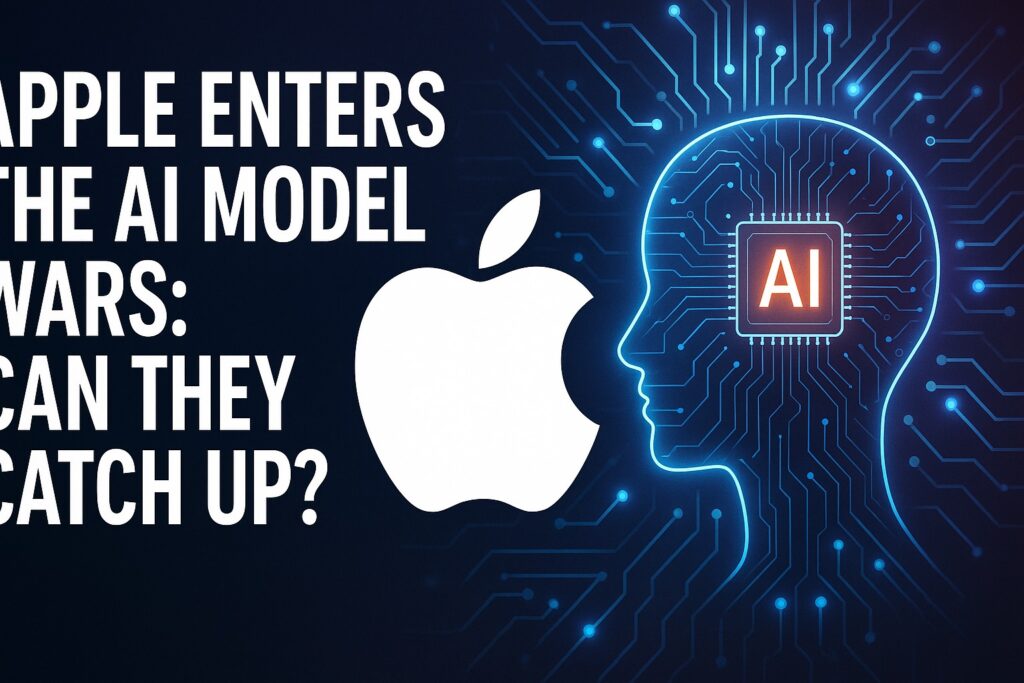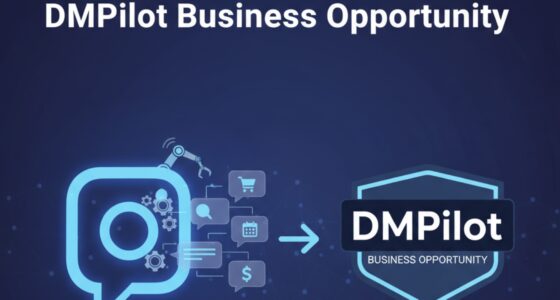Apple just announced they’re officially entering the AI model wars, but here’s what’s shocking: while OpenAI and Google have been releasing public AI models and competing head-to-head, Apple has been mysteriously quiet. Until now. The question isn’t whether Apple can catch up – it’s whether they can survive what’s coming next. I’ve uncovered how Apple’s privacy-first stance and partnership choices could reshape this battle in ways nobody expects. Can Apple’s M&A strategy help them leapfrog the competition? To understand what’s really happening, we need to look at what each player has been doing behind the scenes.
OpenAI’s Relentless Push Forward
OpenAI has mastered the art of strategic deployment, and the evidence is impossible to ignore. Last month, a model named “GPT5 new proxy API EV3” briefly appeared on HuggingFace before being quickly withdrawn. This wasn’t an accident. OpenAI routinely releases advanced models to small groups of users, gathers real-world performance data, then pulls them back before competitors can reverse-engineer their capabilities. Developers who encountered these test models describe coding assistance that understands context across multiple files, suggests architectural improvements, and writes documentation that reads like it came from a senior engineer. One user reported that the model debugged a complex distributed system issue that had stumped their entire team for weeks.
But OpenAI isn’t putting all their eggs in one premium basket. They’re simultaneously preparing open-source releases that could reshape the entire developer landscape. Their rumored 120 billion parameter model represents a strategic masterstroke. Speculation suggests this open-source release could run on a single H100 and deliver near-GPT-4 quality, stirring huge excitement in the developer community. One user wrote, “This might be the biggest open source moment since Deepseek. Mistral who? Meta what? If this is real, the Monopoly just cracked.” Picture this: companies could run advanced AI models locally without sending sensitive data to external servers.
The Microsoft partnership transforms these technical achievements into market dominance. Azure’s global infrastructure gives OpenAI computing resources that would cost competitors billions to replicate, while Microsoft’s enterprise sales force integrates AI models into comprehensive cloud packages for Fortune 500 companies. This isn’t just about better models anymore. It’s about having the infrastructure to deliver those models at scale while competitors struggle with capacity constraints and server costs.

Their pricing strategy reveals just how confident they are. OpenAI has slashed API costs by roughly 75% over the past year while simultaneously improving model quality. What does this mean for competitors? They’re forced into a price war they can’t win. Google and Anthropic burn through venture capital trying to match OpenAI’s prices, while OpenAI leverages Microsoft’s deep pockets to sustain losses that would bankrupt smaller companies.
The multimodal expansion shows OpenAI’s vision extends far beyond text generation. Their latest voice capabilities produce speech that’s indistinguishable from human conversation, complete with natural pauses, emotional inflection, and contextual understanding. The vision integration processes images with accuracy that matches human performance on complex visual reasoning tasks. These aren’t separate features bolted onto existing models. They’re fundamentally integrated capabilities that work together seamlessly.
But can fast performance coexist with reliable safeguards? OpenAI’s models now refuse to generate harmful content, explain their reasoning process, and admit when they’re uncertain about answers. This approach attracts enterprise customers who need AI systems they can depend on for critical business functions. Banks, healthcare systems, and government agencies choose OpenAI specifically because their models behave predictably under pressure.
The developer community represents OpenAI’s most valuable asset. Over three million developers have built applications using their APIs, creating a network effect that competitors struggle to replicate. These developers don’t just use OpenAI’s models. They become advocates, teaching others, writing tutorials, and contributing to an ecosystem that makes OpenAI’s platform the obvious choice for new AI projects.
Here’s the shocking reality: OpenAI stopped being just an AI company months ago. They’re building the operating system for artificial intelligence. Their models provide the core intelligence, their APIs create the interface layer, and their developer tools offer the development environment. Companies that want to integrate AI into their products increasingly find themselves building on OpenAI’s platform by default. This dominance seemed unshakeable until one competitor made a move that changed everything.
Google’s Surprise Counter-Attack
Google just pulled off the most audacious move in AI history. While OpenAI keeps their advanced reasoning model locked behind expensive enterprise contracts, Google released Gemini 2.5 Deep Think directly to Ultra subscribers in the Gemini app for twenty dollars a month. This isn’t just another incremental update. It’s a declaration of war that changes the entire competitive landscape. What does this mean for the AI race? Google just made OpenAI’s premium strategy look outdated overnight.
Deep Think represents a fundamental breakthrough in how AI systems approach complex problems. Deep Think generates multiple solution paths in parallel, refines them, then delivers the best answer—mirroring how human experts work. When you ask Deep Think to solve a coding problem, it doesn’t just work through one approach. It generates dozens of different strategies at the same time, evaluates each one, and combines the best elements to create an optimal solution.
The benchmark results reveal just how revolutionary this technology has become. CEO Sundar Pichai announced that a version of their gold-medal International Math Olympiad model is now available to Ultra subscribers. Google’s own metrics show Deep Think surpasses previous Gemini versions on math, coding, and reasoning benchmarks—achieving a meaningful step-change in AI reasoning capabilities that puts Google ahead of every competitor.
Google’s massive computational infrastructure makes this breakthrough possible in ways competitors simply cannot match. Training models that can think in parallel requires enormous processing power and sophisticated distributed computing systems. Google’s global network of data centers provides the foundation for these resource-intensive operations. While smaller AI companies struggle with hardware limitations and cloud computing costs, Google leverages its existing infrastructure investments to deploy advanced models at scale without breaking their budget.
Here’s where Google’s strategy becomes brilliant: their integration across Search, YouTube, Android, and Cloud services creates an unmatched data advantage. Every search query feeds into YouTube recommendations, which inform Android optimizations, creating a flywheel effect where better AI improves their services, attracts more users, and generates more data for even better AI. No competitor can replicate this advantage because no other company controls such a comprehensive ecosystem of user interactions.
Their pricing strategy exposes a fundamental weakness in the competition. Making Deep Think available to regular consumers through affordable subscriptions democratizes access to capabilities that were previously reserved for enterprise customers. What does this mean for developers and businesses? They can now access world-class AI reasoning for personal projects, educational purposes, and small business applications without massive upfront investments. This accessibility creates a new generation of AI-powered applications that wouldn’t exist under traditional enterprise-only pricing models.
Google’s research culture provides another competitive edge that’s often overlooked. Their academic partnerships and commitment to open research keep them connected to breakthrough discoveries happening in universities worldwide. When researchers publish papers on novel AI architectures or training techniques, Google’s teams can quickly incorporate these advances into their production systems. This creates a continuous innovation pipeline that ensures they stay ahead of the curve on emerging technologies.
Real-world examples demonstrate Deep Think’s practical superiority in ways that matter to actual users. It excels at complex coding challenges that require careful consideration of trade-offs and time complexity optimization. Web developers report that it improves both the aesthetics and functionality of their projects, suggesting design improvements that human experts might miss. Mathematicians using the system describe problem-solving capabilities that feel almost magical, with the AI working through proofs and calculations that would take human experts hours to complete.
Google’s advertising revenue model creates a strategic advantage that pure-play AI companies cannot match. While OpenAI depends on subscription revenue and API fees to fund their research, Google can subsidize AI development using profits from their advertising business. This financial flexibility allows them to offer advanced capabilities at prices that would bankrupt competitors, creating a competitive moat that’s difficult to overcome.
The strategic masterstroke reveals Google’s true intention: they’re not just competing on model quality anymore. They’re using their platform dominance to make advanced AI ubiquitous and accessible. This approach transforms AI from a premium service into a standard utility, fundamentally reshaping user expectations and market dynamics. But while Google celebrates this breakthrough, one major player faces a very different reality.
Apple’s Desperate Scramble
Apple faces steep hurdles catching up to peers who push new AI models every few months. Despite having more cash than most countries and some of the smartest engineers in the world, Apple’s AI capabilities lag significantly behind both OpenAI and Google. While their competitors roll out breakthrough models regularly, Apple struggles to make Siri understand basic requests without frustrating users. What does this mean for the company that once revolutionized personal computing? They’re facing challenges that threaten their entire competitive position.
Apple’s privacy-first approach has become their biggest strategic handicap. Unlike Google and OpenAI, which feed their models with massive, diverse datasets, Apple’s strict on-device processing limits its data pool. Picture this: Google processes billions of search queries daily, YouTube interactions, and Android usage patterns to train their models. OpenAI gathers conversations from millions of users across countless applications. Apple, meanwhile, refuses to collect this data because of their privacy commitments. The result? Their AI systems learn from limited, sanitized datasets that can’t compete with the real-world complexity their rivals access.
Internal culture sources describe tension between hardware and software priorities at Apple. The company built its reputation on beautiful devices and seamless hardware experiences. Now they need to become an AI-first company overnight, and that transformation conflicts with decades of established thinking. Teams working on AI projects report frustration with resource allocation decisions that prioritize new iPhone features over fundamental AI research. This cultural resistance slows down progress when every month matters in the rapidly evolving AI landscape.
Apple has reportedly explored external partnerships to boost Siri’s smarts, including potential ChatGPT integration. Yes, incorporating advanced AI capabilities into Siri provides immediate improvements that users actually notice. But what does this partnership approach really represent? It’s Apple acknowledging they need external help to keep up with basic user expectations. This dependency creates long-term risks because Apple loses control over a core component of their user experience. When your voice assistant relies on a competitor’s technology, you’re no longer driving innovation in one of the most important interfaces of the future.
Apple’s walled garden limits training data variety, while Android and web ecosystems feed richer usage patterns into competitors’ models. Their closed system prevents access to the diverse data sources that power world-class AI models. This restriction becomes more problematic as AI requires understanding of complex, varied human interactions across different platforms and use cases. Apple’s ecosystem advantage in user experience becomes a data disadvantage in AI development.
While Apple’s silicon excels in efficient on-device tasks, it can’t deliver frontier reasoning without server-scale compute—making top AI researchers less drawn to Apple’s privacy constraints. Running AI models directly on phones and laptops provides privacy benefits and reduces latency for basic tasks. However, advanced reasoning capabilities require enormous computational power that no mobile device can provide. While Apple optimizes models to run efficiently on their silicon, Google and OpenAI leverage massive server farms to offer capabilities that simply cannot exist on individual devices. This architectural choice forces Apple to compete with significant limitations.
Financial pressure intensifies as AI becomes essential for premium devices. Consumers increasingly expect sophisticated AI features as standard functionality, not premium add-ons. Apple must invest billions in AI development while maintaining their industry-leading profit margins on hardware sales. These competing demands create tension between short-term profitability and long-term competitiveness.
Leaked information about Apple’s internal AI projects reveals consistent underperformance compared to their ambitious goals. Multiple projects have been canceled or significantly scaled back after failing to achieve breakthrough results. Is Apple headed toward acquisition spree or strategic partnerships to fill these gaps? The decisions they make in the coming months won’t just determine their AI future—they’ll reshape how the entire technology landscape evolves.
The Battle’s Broader Implications
This three-way battle is fundamentally reshaping the entire technology industry in ways most people don’t realize. Every company now faces a critical decision: which AI ecosystem will they build their future on? Picture this scenario playing out across thousands of businesses right now. A startup developing a new productivity app must choose between OpenAI’s APIs, Google’s models, or Apple’s on-device processing. With developers already complaining about platform lock-in, that choice feels irreversible once they commit to a toolchain. That decision determines their technical capabilities, pricing structure, and competitive positioning for years to come. What does this mean for the broader tech landscape? We’re witnessing the formation of distinct camps that will define the industry’s structure for the next decade.
The developer ecosystem wars reveal just how high the stakes have become. Each company fights to become the default platform where programmers build AI applications. Developers who choose one platform often find it difficult to switch later because their applications become deeply integrated with specific tools and frameworks. OpenAI’s comprehensive APIs create switching costs through custom integrations, while Google’s affordable consumer subscriptions lock developers into their pricing models. Apple’s privacy-focused solutions work seamlessly across their device ecosystem but limit external compatibility. This creates loyalty that extends far beyond simple vendor relationships.
Consumer expectations are evolving at breakneck speed as advanced AI capabilities transform from luxury features into basic requirements. AI features once reserved for labs are now table stakes for any device or app. Google’s decision to release Gemini 2.5 Deep Think directly to consumers for twenty dollars monthly demonstrates this shift perfectly. Advanced reasoning capabilities that would have cost thousands of dollars in enterprise contracts just months ago are now accessible to anyone with a basic subscription. This accessibility pressure forces every company to deliver more sophisticated AI features at lower prices.
The geopolitical implications extend far beyond corporate competition. American companies racing to maintain technological leadership face emerging international competitors who represent different approaches to AI development. Consider the contrast between American open research culture and Europe’s regulatory caution. While US companies push boundaries with rapid model releases, European authorities emphasize compliance frameworks that could fragment global markets. The country that controls the fundamental AI infrastructure gains enormous influence over international commerce, national security, and technological standards worldwide.
Traditional software companies face economic disruption that threatens their entire business model. AI-native startups can outpace legacy vendors by shipping intelligent features in weeks, not years. These established businesses must completely rethink their value proposition when AI platforms enable newcomers to build superior solutions in months rather than years. The companies that survive this transition will be those that embrace AI-first thinking and rebuild their products around intelligent capabilities rather than manual processes.
Smaller companies and startups face winner-take-all dynamics that force difficult strategic decisions. Building on multiple AI platforms requires enormous resources that most young companies cannot afford. They must choose one ecosystem and hope their selected platform emerges victorious. This creates concentrated power among the few companies that control the underlying AI infrastructure. Startups that choose correctly gain access to powerful capabilities and large user bases. Those who choose poorly may find themselves locked into declining platforms with limited growth potential.
The race drives down costs and increases accessibility in ways that democratize capabilities previously available only to tech giants. AI tools that required massive computational resources and specialized expertise now work through simple web interfaces. This democratization enables innovation across industries that never had access to advanced technology before. We’re witnessing the formation of the fundamental infrastructure layer for the next era of computing, with massive implications for innovation, competition, and human progress that will define technological development for generations. With so many forces at play, what will the next 12 months look like?
Conclusion
The strategic decisions happening right now will determine which companies control the infrastructure that powers tomorrow’s technology. Apple’s entry into the AI model wars represents a last-ditch effort to avoid becoming just a premium hardware company in a software-defined world. What does this mean for you? The choice of which AI ecosystem to invest your time and skills in will shape your career and opportunities for years to come.
Three battlegrounds will determine the winner: model quality, data ecosystems, and infrastructure scale. Watch for OpenAI’s enterprise dominance, Google’s consumer accessibility push, and Apple’s privacy-first approach. Let me know in the comments if you’re team OpenAI, Google, or Apple—and why. With rumored GPT-5 days away and Deep Think rolling out now, subscribe for deep dives as these developments unfold.








